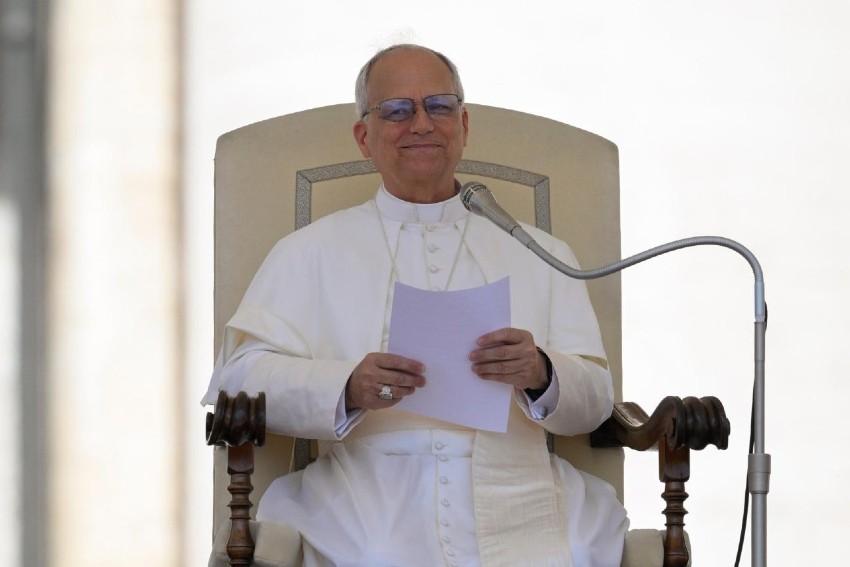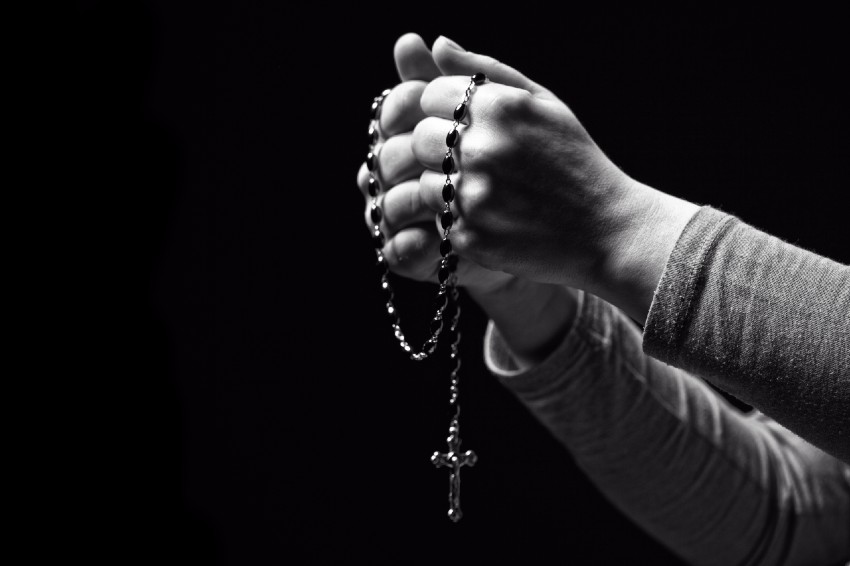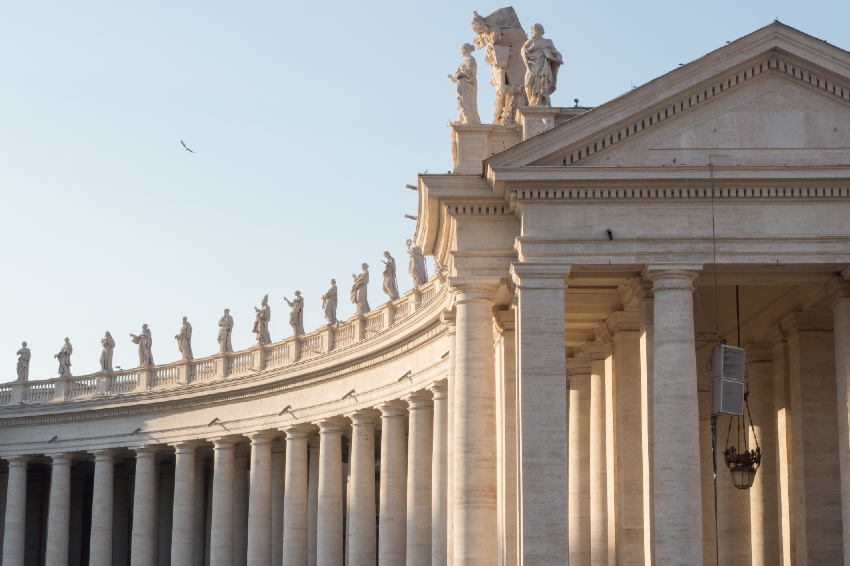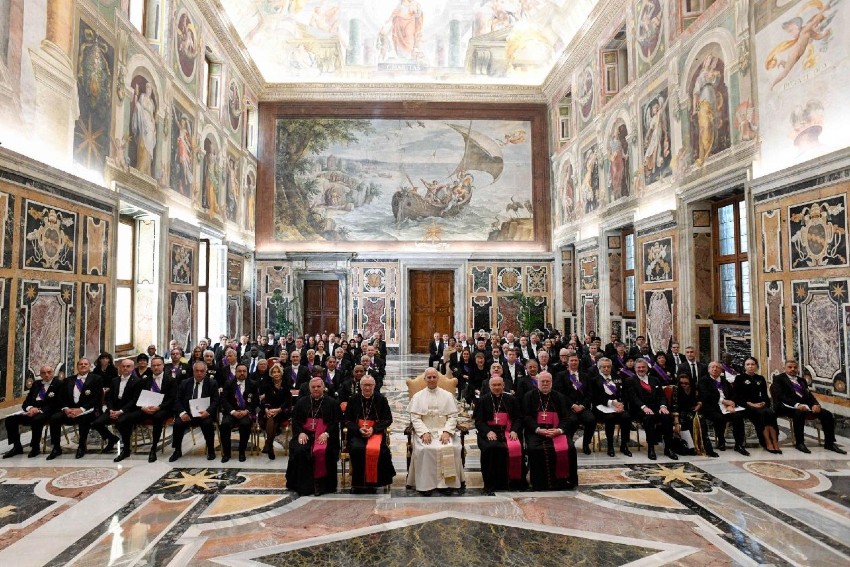
Christ holds out his hand above the facade of St. John Lateran church in Rome this evening, November 9, 2024.
Tonight was the 1,700th anniversary of the dedication of the church on November 9, 324 A.D., in the time of the Emperor Constantine (died 337), and just 6 months before he summoned the Council of Nicaea near modern-day Istanbul in Turkey in the spring of 325 A.D.
The 1,700th anniversary of that First Ecumenical Council will be celebrated this coming year, in the spring of 2025
Letter #46, 2024, Saturday, November 9: A Cathedral turns 1,700 years old…
This Church above is the Mother and Head (“mater et caput”) of all the Churches of the world.
It is the Basilica of St John Lateran, and is the Pope’s cathedral church in Rome (the cathedral of Rome is not St. Peter’s, it is this church, St. John Lateran).
For about 1,000 years, to the early 1300s, the Popes lived here, then they moved to the Vatican in the late 1300s, because St John Lateran was in very poor condition. (link)
Today is the 1,700th anniversary of the church’s dedication by Pope Silvester I on November 9, 324 A.D.
The Gospel read this evening was the story of Zaccheus, who desired to see Jesus and so climbed a tree, and, the homilist said, this signifies that faith comes from seeing and gazing upon the face of Jesus….
Jesus goes out to encounter those who are lost and cannot see Him.
He finds them and saves them.
Zaccheus sees Jesus, and decides to change his life and return four times the amount he has stolen, so the sight of Jesus’ face is not for Zaccheus only, but has consequences that reach out to many others, the homilist said.

The cathedral contains monumental statues executed in the early 1700s, are are world-famous for their grandeur and expressiveness, as if the marble has taken on life and movement, with breathing flesh and flowing garments. The statues of the 12 apostles (with St Paul replacing St Matthias) were created at the behest of Pope Clement XI (reigned 1700-21) between 1704 and 1718. The statues were carved by a host of Italian and French sculptors, each of whom was given a sketch drawn by the pope’s favorite painter, Carlo Maratta (1625-1713), which they had to follow. (link)
This is St. John, who holds a pen in his hand to signify that he is writing his Gospel. His Gospel begins with a reflection on the Logos of God — the word of God, the reason of God, the meaning of God — which is who Christ is. Christ at a certain moment in history became man, as St John tells us, bring the Logos very near to us, within our reach, able to be seen and touched. John’s Gospel reflects on all this, and so is regarded as the Gospel that “soars the highest” in theological, philosophical and mystical terms. Thus, John’s symbol in the Middle Ages came to be the eagle, who soars higher than all creatures, and you can see the eagle behind the apostle’s right leg. Whenever there is an apostle with an eagle, it is St. John. For Matthew, the symbol is a man, for Mark, a lion, and for Luke, an ox. (link)
Below, one of four nuns leaving after tonight’s Mass greets an Italian woman with an embrace and a kiss. On each side of the name are the enormous statues of the 12 apostles. The church contains the skull of St Peter, kept above the altar, and the table top from the Upper Room where Christ celebrated the Last Supper, believed also to have been used by St Peter in the same room to celebrate the first Masses ever celebrated. The floor is cosmatesque, like Santa Maria in Trastevere, where I will be tomorrow night, but not as elaborate and inventive

Below is a picture of the inscription on the front of St John Lateran which I took this evening. The words “Sacros,” “Lateran” and “Eccles” are actually all abbreviations, so they have to be expanded to be understood:
They actually stand for:
“Sacrosancta Lateranensis ecclesia” (which means “Most Holy of the Lateran Church“) and then follows:
“omnium urbis et orbis ecclesiarum mater et caput” (“of all the churches in the city and the world, the mother and head.”)
–Inscription on the façade of the Basilica of St. John Lateran, Rome

Here below is a nice piece by Hanna Brockhaus of Catholic News Agency about the celebration that took place this evening. Here piece was a preview and was written before the ceremony.
Rome’s most important church celebrates 1,700th birthday (link)
Vatican City, Nov 9, 2024 / 04:00 am
The most important church in Rome, the Archbasilica of St. John Lateran, is celebrating its 1,700th anniversary on Nov. 9.
The church is the cathedral of the Diocese of Rome and the seat of the bishop of Rome, the pope. The adjoining palace served as the papal residence until the 14th century.
The anniversary of the dedication has been commemorated as a feast day by the whole Catholic Church since 1565 due to its importance as the “mother and head of all churches of the city and the world.”
A Latin inscription in the basilica proclaims this point in Latin: “Omnium ecclesiarum urbis et orbis mater et caput.”
“By honoring the basilica, one intends to express love and veneration for the Roman Church, which, as St. Ignatius of Antioch affirms, ‘presides over the charity’ of the entire Catholic communion,” Pope Benedict XVI said in 2008.
The Archbasilica of St. John Lateran was built after the promulgation of Emperor Constantine’s Edict of Milan, which in 313 granted Christians freedom to practice their religion.
Pope Sylvester I dedicated the archbasilica on November 9 in the year 324. St. John the Baptist and St. John the Evangelist became the church’s patrons in the sixth century, but it is called St. John Lateranbecause it was built on property donated by the Plautii Laterani family during the Roman Empire.
The Diocese of Rome celebrated the 1,700th anniversary with a full year of special festivities, including concerts, Masses, and religious-cultural talks about the history of the archbasilica and the adjoining Lateran Palace.
The jubilee will conclude on Saturday with a Mass celebrated by the diocese’s new vicar general, Cardinal-designate Baldassare Reina.
In 2008, the now-deceased Pope Benedict XVI commented on the feast of the Dedication of Rome’s Lateran Basilica in his Sunday Angelus address.
The Emperor Constantine, Benedict XVI recalled, “gave Pope Miltiades the old property of the family of the Laterans and built the basilica, baptistery, and the residence of the bishop of Rome, where the popes lived until the Avignon period.”
Pope Benedict noted the importance of the material building in which communities gather to praise God, and said, “every community has the duty to guard with care its own sacred building, which constitutes a precious religious and historical patrimony.”
“Let us invoke the intercession of Most Holy Mary to help us become, like her, a ‘house of God,’ a living temple of love,” he said.
Hannah Brockhaus is Catholic News Agency’s senior Vatican correspondent. After growing up in Omaha, Nebraska, she earned a degree in English from Truman State University in Missouri. In 2016, she moved to Rome, Italy, where in her spare time she enjoys reading and going on adventures with her husband and son.
Special note: If you would like to visit places like St John Lateran with Inside the Vatican staff and writers during the Jubilee of 2025, please reserve a spot on one of our 2025 Italy pilgrimages, or write to us to ask us to develop a special custom pilgrimage for you and your family and friends or parish, with dates suitable to you, at this link or this link. –-RM
A note to readers:
To support this letter, donate here.
To subscribe to Inside the Vatican, click here.
If you wish to travel with us on pilgrimage, click here.
Thank you! —RM






Facebook Comments